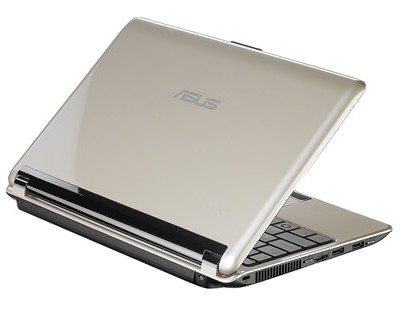| Currently available for about $270 online, the VG2428wm is a screaming deal if you want a top-end, 24-inch LCD but not the top-shelf price tag that's often attached to such displays. The VG2428wm supports VGA and DVI-D ports but not HDMI. Instead, you get a two-port USB 2.0 hub and a 3.5mm stereo that feeds the 2W integrated stereo speakers. The speakers are sufficient for voice and YouTube, but you wouldn't want to game with them. Using X-Rite's ilDisplay2 package, we measured the VG2428wm out of the box with a 2.2 gamma, an already optimal 6500K color temperature, a minimum luminance of 0.3cd/m2, and a running luminance (at 100%) brightness of 329cd/m2-a respectable 10% above the vendor's specification. We observed only slight blooming around the bottom edge and nothing out of the ordinary for a mainstream CCFL unit. 
We've heard from Viewsonic that the company is transitioning to LED backlighting across its product line, and we can see why. Despite excellent color quality (that admittedly favors reds a bit over blues before calibration), deep blacks, zero visible ghosting, and excellent ability to preserve bright color grades without banding, the only weakness in this model is its power consumption. With a solid black background on the Windows 7 desktop, we measured the VG2428wm drawing 38.4W A solid white background yielded 37.3W. | Withthe default Win7 desktop, we measured 37.9W at 100% brightness, 27W at 80%, and 22.5W at 50%, with full-screen video maxing out at 41.2W LED panels generally consume much less. However, Viewsonic's stand is brilliant, allowing for a 90-degree pivot, 360-degree swiveling, almost effortless tilting from - 5 to 20 degrees, and a height adjustment spanning 5.3 inches, so you can be ergonomically comfortable. The 0.75-inch bezel isn't remarkably thin, but it's svelte enough to escape much notice. Overall, the VG2428wm is one of the best monitor values we've tested recently . | |
























![clip_image002[4] clip_image002[4]](https://blogger.googleusercontent.com/img/b/R29vZ2xl/AVvXsEiLHEZVj6fUL-sFPz5DWQ26c1TmP9leVOM1FqZYlkhcCE-tIZ0bxCug_RAxS_ybwIr0g5x3kAIfOlN49d3OETQqTXYO1X5p7Tx2L98N0bwo-3n6hzhIlPPvdtDmCodgflzG4xJ86Sx_DPI/?imgmax=800)


